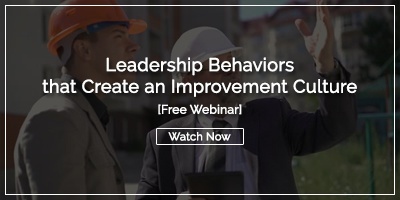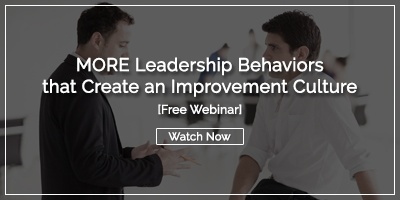 During the early stages of KaiNexus, our chief executive officer, Greg Jacobson, and our chief revenue officer, Jeff Roussel, put together a few key points that capture the core values of KaiNexus. Recently, I got the opportunity to sit down (via video chat) with Greg and Jeff to have them shed some light on our beliefs.
During the early stages of KaiNexus, our chief executive officer, Greg Jacobson, and our chief revenue officer, Jeff Roussel, put together a few key points that capture the core values of KaiNexus. Recently, I got the opportunity to sit down (via video chat) with Greg and Jeff to have them shed some light on our beliefs.
At KaiNexus, we base our work and everyday lives around 10 key points. Not only do we practice and embody these beliefs, but we also hope to spread them to the people we interact with on a daily basis. Join me as we walk through the 10 beliefs of KaiNexus.
It is possible to engage every person in the goal of getting a little better every day.
Doesn’t matter if you’re in a business or family — every person can do improvement. Everyone can participate in helping that organization (family or business) get a little better every day. Also, getting a little better every day creates an exponential impact in the long run. Without the recognition that every company and organization has the possibility of getting everyone engaged, then we can’t even step our feet into the idea of getting better every day.
People are intrinsically motivated to improve - and can do so if you show them how.
Coming from a place of continuous improvement, you have to take the leap of faith that people do have an intrinsic motivation to get better. When you realize it’s possible to engage everyone and that people are intrinsically motivated to improve, the continuous improvement process will naturally unfold. In order for people to willingly participate in improvement, they need to feel empowered. Once they feel empowered, the chances of them participating in improvement escalates even more when leaders show them how. As a leader, give some guiding principles, and then the employees will empower themselves to do the improvement work.
The people on the front lines who are doing work will best know how to improve that work.
If you think about going to your grocery store or pharmacy, there are hundreds of stores with one executive that’s in charge of all the stores. The executive does not have the bandwidth to be on the floor of every store at every moment. In this case, the people working on the floor daily are going to be the ones that know best about potential room for improvements. You need to have faith that the people doing the work are going to be the ones that have the best ideas to make processes more effective and efficient. This is not an easy thing for leadership to do. Leaders must let go of the idea that they must solve all the problems, and start believing that they need to help create an environment that solves problems.
It is vitally important to not just ask for ideas, but also to evaluate and implement them.
The very first step is to collect people’s ideas, and the real value begins when you start exploring these ideas and coming up with a plan for implementation. The real value comes from bringing a group of minds together and iterating on an idea and making a change from that. It’s really a shift in mindset and realizing that the value is not at the capture part, but it’s at the implementation part. If all you do is ask for ideas, people start to realize that you don’t really care to implement them. If you want to mine your people for great ideas, you have to mine all the ideas and have a process for implementation.
The best way to uncover a really big idea is to ask for as many small ideas as possible.
There needs to be a recognition that if you’re only looking for big ideas, you’re not going to uncover all the small ideas and you’ll probably miss some of the big ideas that come out of the smaller ones. Stop constricting yourself to those big ideas. The best way to uncover really big ideas is to uncover as many small ideas as you can.
The right technology CAN actually make a difference in the way people behave and work.
One, people think technology is only software. If we weren’t using technology to do any kind of work, then we would be keeping everything in our brain. We’re all using technology to change the way we behave and work. The belief here is that the right technology will make a difference in certain circumstances.
For Greg, this belief reminds him of how KaiNexus was founded. He learned about kaizen principles and tried to implement it in emergency medicine. He tried to use the technology that was laying around — it ended up being very laborious. There was nothing really out there from the bottom-up to implement continuous improvement — then KaiNexus was born. So yes, the right piece of technology can influence the way we behave and develop a culture of CI.
Providing exceptional service to help our customers reach their full potential will make us a stronger company.
We are a technology company, but we are a service organization. We proactively help organizations create a culture of improvement. There’s truly a deep sense in what we do when we create a partnership — we value the relationship we build with our customers. This causes our customers to actually help us get better. Actually, KaiNexus is where it's at today because we listened to all the CI experts to help improve our own platform.
Leaders must drive the change to create a culture of continuous improvement.
The leaders need to make a choice that they’re going to create a culture of continuous improvement. Without committing to this, it really doesn’t matter what the frontline people do. This is a decision that is made at the highest level of the organization. Leaders may not be spending 100% of their day working on CI, but they must be 100% committed to a culture of CI. They’re going to be THE driver from an intention standpoint to make this culture happen. If you’re going to build a sustained system, there has to be an interplay between the people and behaviors they exhibit and the processes you build.
If we listen to our customers they will show US how to delight THEM.
Much of our early on success is due to the fact that we had customers give feedback on how to improve the software. True quality is defined by the customer and not by the company producing the product. If you continue asking customers for feedback and engaging, they will show you exactly how you can continue to delight them. Very few of our customers are small software companies, so we don’t do the same things as our customers — without listening to them, how would we know how to serve them? The customers are the ones that have the questions and ideas on how we can best support them.
KaiNexus will make the world a better place.
We believe that in our small way, we are going to make the world a better place. If we can help organizations create a culture of continuous improvement, their employees and customers are going to be happier. Continuous improvement should ultimately make us all better. For example, during this COVID pandemic, we have a customer that’s working on increasing testing capabilities. To know that we’re a part of those companies to help drive things is a profound example that the work we’re doing matters, and we’re making the world a better place.




Add a Comment